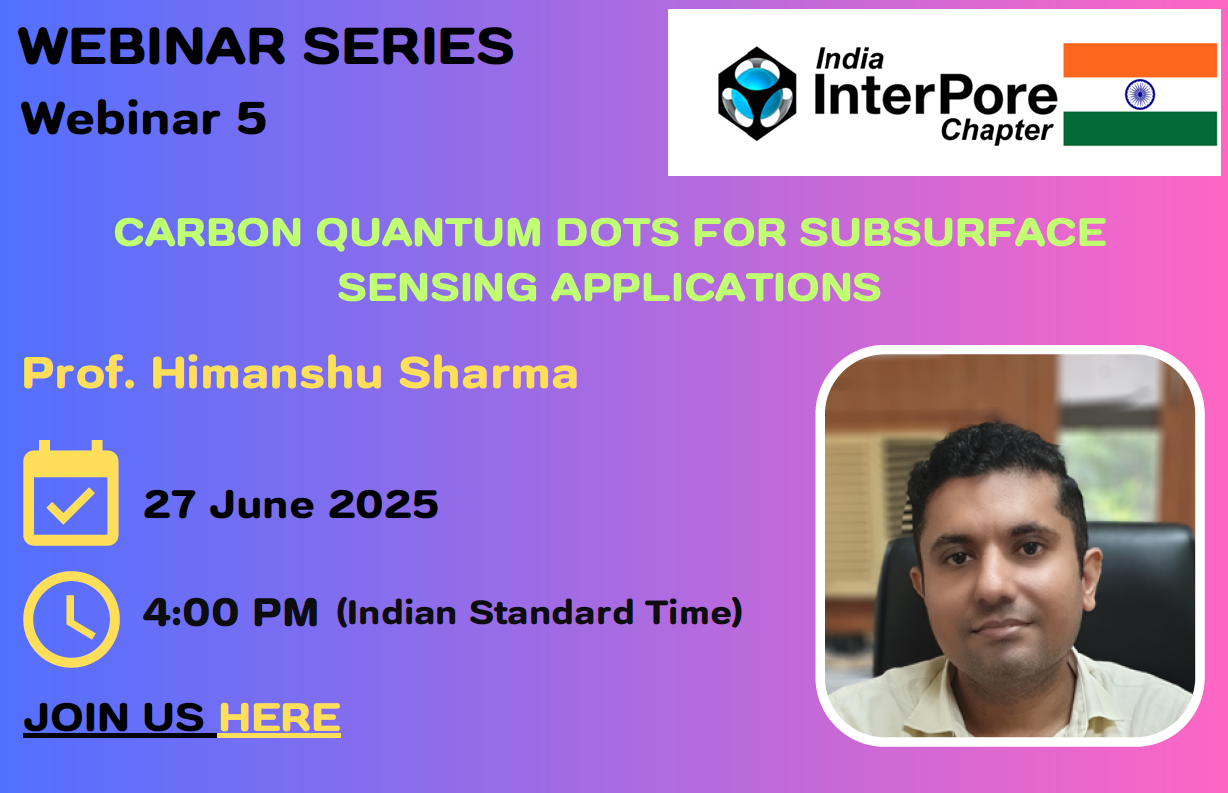Webinar Series: Carbon Quantum Dots for Subsurface Sensing Applications
Meeting Link: meet.google.com/gbz-jnef-cge
Event Flyer can be downloaded here
Subsurface tracers are essential for understanding fluid flow in porous media in various applications, including groundwater monitoring and oil recovery. These tracers help determine reservoir characteristics such as inter-well connectivity, flow patterns, reservoir heterogeneity, and residual oil saturation. The commonly used tracers, including fluorescent dyes, radioactive tracers, and fluorinated chemicals, are not environmentally benign. The potential use of nanoparticles as subsurface tracers has been studied in the past. However, these nanoparticles exhibit high retention in porous media as they are unable to withstand the high temperature and salinity conditions often encountered in the subsurface. Moreover, the online detection of nanoparticle tracers is not easy. Furthermore, there are limited investigations in the literature on the transport of nanoparticles through porous media in the presence of another immiscible phase. In my talk, I will present our ongoing work on carbon quantum dots, derived from waste plastic bottles, as subsurface tracers. CQDs are biodegradable, have low toxicity and bioaccumulation, and are, therefore, environmentally friendly compared to many existing tracers, including fluorescent dyes. The concentration of these CQDs can be easily quantified using UV-vis spectroscopy. Our study shows that these CQDs are stable under high temperature and high salinity conditions and show negligible partitioning in the hydrocarbon phase. Furthermore, these CQDs show negligible adsorption on sandstone rocks. The transport studies using the CQDs in sandstone and limestone rocks show that their retention is negligible in sandstone rocks but not in limestone rocks. Their retention in limestone rocks is found to be pH-dependent. Furthermore, the transport of these CQDs in porous media is not affected when an immiscible hydrocarbon phase is present in the porous media. Thus, these CQDs are promising in determining residual oil saturation.
About the Speaker: Dr. Himanshu Sharma is an assistant professor in the department of chemical engineering at IIT Kanpur. His research interests include flow through porous media, enhanced oil recovery, carbon capture and sequestration. Some of the ongoing studies in his group include colloid transport in porous media, wettability alteration, and Pickering emulsions. He completed his PhD and postdoctoral fellowship at the University of Texas at Austin, USA. He holds B.Tech and M.Tech degrees in chemical engineering from IIT Kharagpur. Prior to joining IIT Kanpur, he worked at Petronas research in Malaysia.



